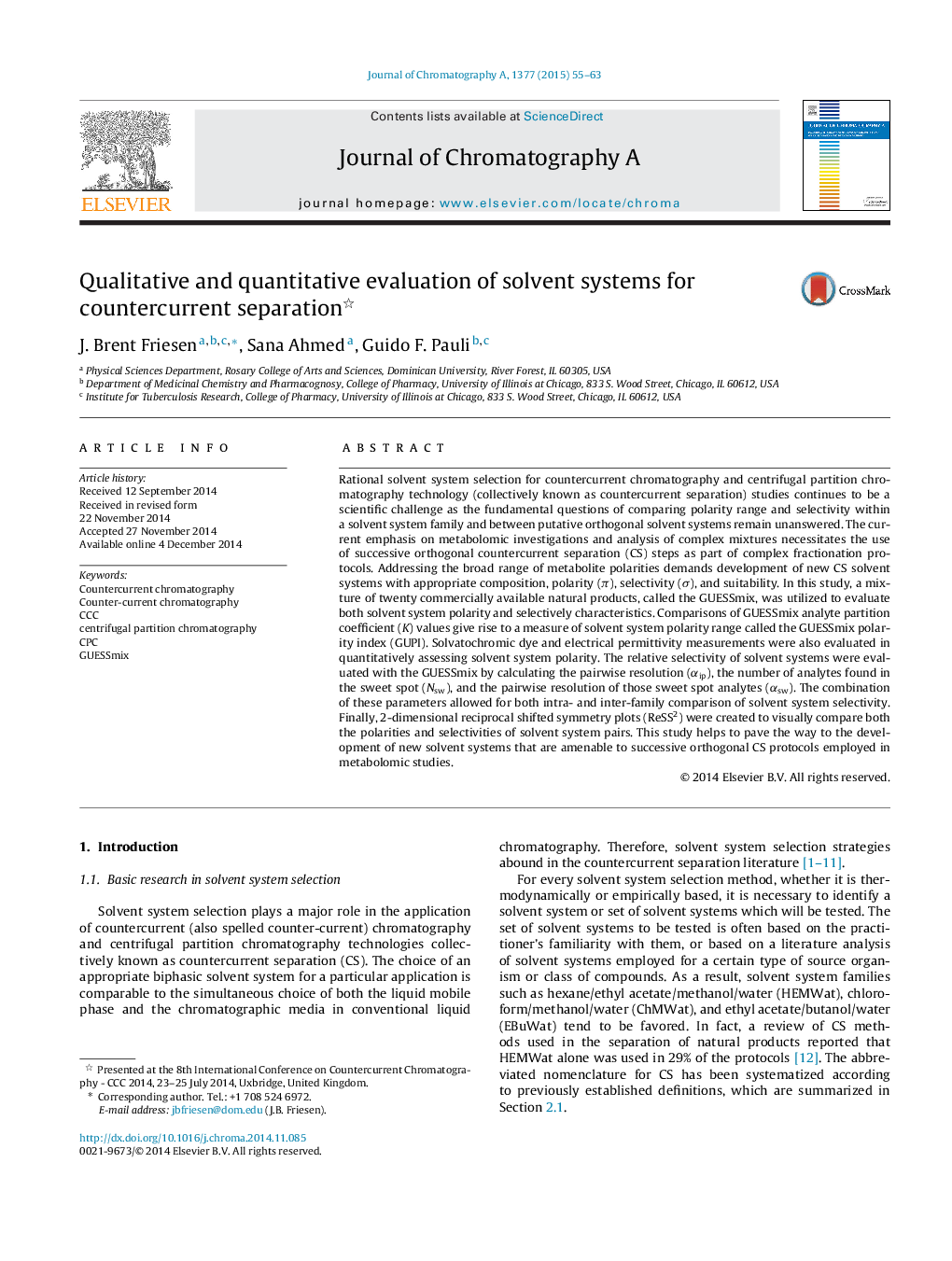| کد مقاله | کد نشریه | سال انتشار | مقاله انگلیسی | نسخه تمام متن |
|---|---|---|---|---|
| 1198923 | 1493549 | 2015 | 9 صفحه PDF | دانلود رایگان |
• The GUESSmix was utilized to evaluate solvent system polarity and selectively characteristics.
• Solvent system polarity was described by three methods, including a new GUESSmix Polarity Index.
• Solvent system selectivity was evaluated by calculating the pairwise comparison methodology.
• 2D Reciprocal Shifted Symmetry (ReSS2) plots were created to visually compare polarity and selectivity.
Rational solvent system selection for countercurrent chromatography and centrifugal partition chromatography technology (collectively known as countercurrent separation) studies continues to be a scientific challenge as the fundamental questions of comparing polarity range and selectivity within a solvent system family and between putative orthogonal solvent systems remain unanswered. The current emphasis on metabolomic investigations and analysis of complex mixtures necessitates the use of successive orthogonal countercurrent separation (CS) steps as part of complex fractionation protocols. Addressing the broad range of metabolite polarities demands development of new CS solvent systems with appropriate composition, polarity (π), selectivity (σ), and suitability. In this study, a mixture of twenty commercially available natural products, called the GUESSmix, was utilized to evaluate both solvent system polarity and selectively characteristics. Comparisons of GUESSmix analyte partition coefficient (K) values give rise to a measure of solvent system polarity range called the GUESSmix polarity index (GUPI). Solvatochromic dye and electrical permittivity measurements were also evaluated in quantitatively assessing solvent system polarity. The relative selectivity of solvent systems were evaluated with the GUESSmix by calculating the pairwise resolution (αip), the number of analytes found in the sweet spot (Nsw), and the pairwise resolution of those sweet spot analytes (αsw). The combination of these parameters allowed for both intra- and inter-family comparison of solvent system selectivity. Finally, 2-dimensional reciprocal shifted symmetry plots (ReSS2) were created to visually compare both the polarities and selectivities of solvent system pairs. This study helps to pave the way to the development of new solvent systems that are amenable to successive orthogonal CS protocols employed in metabolomic studies.
Journal: Journal of Chromatography A - Volume 1377, 16 January 2015, Pages 55–63
